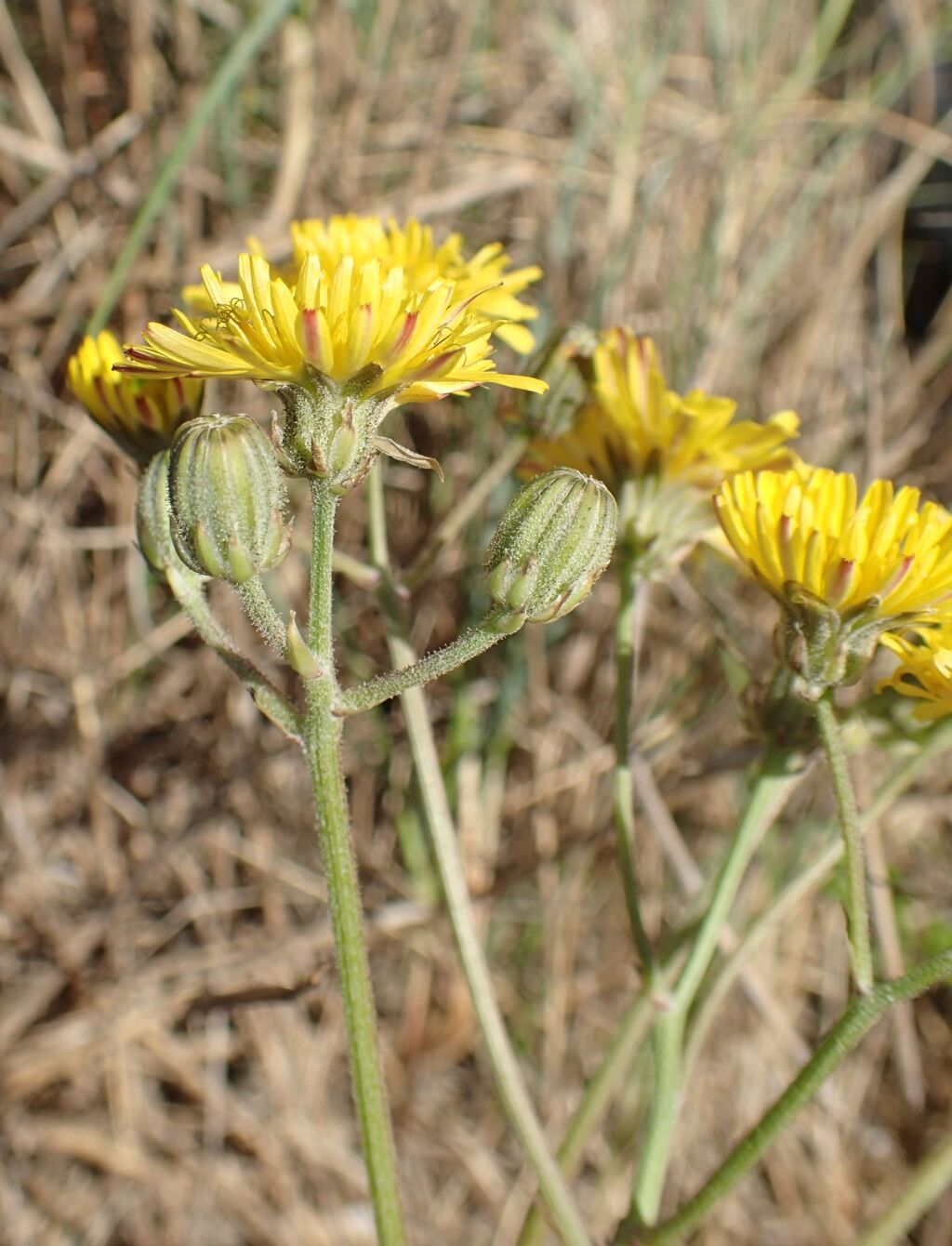Crepis vesicaria subsp. taraxacifolia
(Thuill.) Thell. ex Schinz & R.Keller Dandelion HawksbeardErect or ascending annual or biennial, to c. 100 cm high, often purplish near base; young stems with short cobwebbed hairs and usually with stout, reddish spreading gland-tipped hairs to c. 0.5 mm long. Rosette (well-developed) and lower cauline leaves petiolate, oblong to oblanceolate, usually deeply 1–2-pinnatifid, mostly 8–15 cm long and 1.5–5 cm wide, shortly bristly all over; upper cauline similar to lower or subentire, auriculate. Capitula campanulate, erect in bud; outer bracts lanceolate or ovate, glabrescent; inner bracts lanceolate, (6–)9–12 mm long, outer surface with sparse to dense cobwebby hairs, often with short (to c. 0.3 mm) erect glandular hairs, inner surface with fine appressed hairs; ligules 6–9 mm long; receptacle with low ciliate ridges. Cypselas 6–9 mm long, all narrowly beaked for up to half their length, scabrous; pappus bristles in 1(–2) row(s). Flowers Oct.–Dec.
Wim, GleP, Brid, VVP, GipP, WaP, Gold, CVU, DunT. Also naturalised SA. Native to Europe. A common weed of roadsides, paddocks and margins of watercourses in south-western Victoria, mostly Casterton–Portland–Camperdown area, but also near Ballarat and Castlemaine. Apparently expanded significantly in range since c. 1960.
Walsh, N.G. (1999). Crepis. In: Walsh, N.G.; Entwisle, T.J., Flora of Victoria Vol. 4, Cornaceae to Asteraceae, pp. 685–688. Inkata Press, Melbourne.
 Spinning
Spinning

